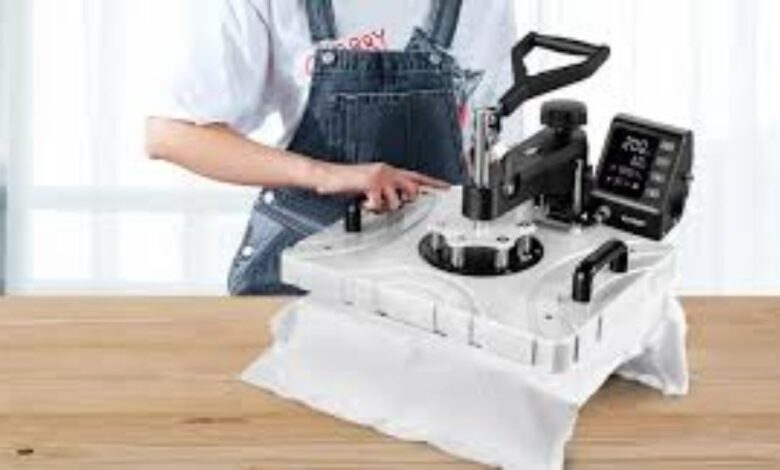Can You Sand a Heat Press Platen? Everything You Need to Know

When it comes to maintaining your heat press machine, there are several factors to consider to ensure optimal performance, and one common question many heat press users ask is, “Can you sand a heat press platen?” In this article, we’ll explore the concept of sanding a heat press platen, why it might be necessary, and whether or not it’s a good practice. At Sphere Magazines, we’re all about providing detailed, practical insights into the world of heat pressing and other relevant topics to help you stay informed.
A heat press platen is the part of the machine that applies pressure and heat to the materials you’re working with. Over time, the platen can get damaged, dirty, or accumulate residue from transfers, which can affect the quality of your prints. Sanding it down is one method some users turn to when trying to restore their platen to its original condition. But is this a safe or effective solution? Let’s dive into the details.
What Is a Heat Press Platen?
Before we dive into the main question, let’s take a step back and clarify what exactly a heat press platen is. The platen is the heated surface of the heat press machine, typically made of metal or other materials capable of maintaining consistent heat. It is the contact point between the heating element and the material being pressed, such as fabrics, vinyl, or transfers.
There are usually two platens: a top platen and a bottom platen. The top platen is typically heated and moves down to apply pressure to the material, while the bottom platen remains stationary. The platen plays a crucial role in ensuring your heat press functions properly and delivers quality results.
Why Do You Need to Sand a Heat Press Platen?
Sanding a heat press platen is something that’s generally considered a last resort when cleaning or restoring the platen. There are several reasons why you might want to sand your platen, including:
- Surface Build-up and Residue
Over time, heat press platens can accumulate residue from transfers, adhesives, and other materials. If this residue isn’t cleaned properly, it can cause uneven heat distribution and potentially damage your materials during future pressings. Sanding the platen may be necessary to remove this build-up if regular cleaning methods, such as using solvents or scraping, are not effective. - Minor Scratches or Surface Damage
Heat press platens can get scratched, dented, or nicked, especially after frequent use. Minor damage can affect the pressure and heat transfer, resulting in less than ideal outcomes for your projects. Sanding the platen can help smooth out these imperfections and restore it to a better state. - Restoring the Surface to its Original Smoothness
When your platen’s surface becomes rough or uneven, it can impact the quality of the press. Whether it’s from wear and tear or a build-up of materials, sanding can potentially restore the smooth surface needed for a uniform transfer.
How to Sand a Heat Press Platen: A Step-by-Step Guide
If you’ve decided that sanding your heat press platen is the best course of action, it’s important to proceed with caution and follow the right steps to ensure that you don’t cause further damage. Here’s a basic guide on how to sand a heat press platen effectively.
1. Unplug and Cool Down the Heat Press
Safety is the first priority. Always make sure the heat press is unplugged, and the platen has completely cooled down before you begin sanding. Working on a heated platen could be dangerous, not to mention damaging to both the machine and yourself.
2. Clean the Platen Thoroughly
Before sanding, it’s essential to clean the platen. Use a soft cloth or sponge with some solvent like rubbing alcohol to wipe away any transfer residue, oils, or dirt that may have built up. This step helps ensure you’re working with a clean surface and reduces the risk of sanding in contaminants that could scratch the platen.
3. Choose the Right Sandpaper
You’ll want to use a fine-grit sandpaper for this task. Start with a higher grit, such as 400 or 600, and avoid coarser grits that might cause deeper scratches. You can always move to a finer grit later if needed.
4. Sand in a Circular Motion
Use gentle, circular motions while sanding. Apply even pressure, but don’t press too hard, as this could cause uneven wear. Your goal is to smooth out any imperfections, not to grind away a significant portion of the material.
5. Check the Surface Regularly
After a few passes, stop and check the surface. Use a soft cloth to wipe away any dust and inspect for smoothness. If you notice any rough spots or scratches remaining, continue sanding until the surface feels uniform and smooth.
6. Polish the Platen
Once you’ve finished sanding, you may want to polish the surface to restore a smooth and shiny finish. A polishing compound or a soft cloth can help with this.
7. Reassemble and Test
After sanding and polishing, reassemble your heat press machine and test the platen with a sample material. Make sure it’s heating evenly and the pressure is consistent. This will help you ensure that your sanding process didn’t affect the functionality of the heat press.
Is Sanding a Heat Press Platen Safe?
The safety of sanding your heat press platen depends largely on the quality of your machine and the way you approach the process. While minor sanding can be helpful for removing surface build-up or small scratches, over-sanding or improperly sanding the platen can lead to damage. The platen could become uneven, and too much material removal could negatively impact the overall pressure or heat distribution.
If your platen is seriously damaged, it may be more cost-effective and safer to replace it rather than attempt sanding. Moreover, not all platens are designed to be sanded, so always refer to your manufacturer’s instructions before attempting this type of maintenance.
Alternatives to Sanding Your Heat Press Platen
If you’re hesitant about sanding your platen, there are a few alternative methods to consider before resorting to this process:
- Cleaning Solutions
Sometimes, build-up on the platen can be removed with specialized cleaning solutions. These solutions are designed to break down adhesives and transfer residue without damaging the surface. Always ensure the solution is safe for the material of your platen. - Scraping
For residue or build-up that’s more stubborn, using a scraper or putty knife can help remove the excess material. Be sure to scrape gently to avoid scratching the surface. - Using a Non-stick Cover
Some heat press machines come with non-stick cover sheets that you can place over the platen to prevent residue from accumulating in the first place. These covers are typically easy to replace and clean.
Conclusion: Should You Sand a Heat Press Platen?
In conclusion, the question of whether you should sand a heat press platen depends on the extent of the damage and your confidence in performing the task. While sanding can be effective for removing minor surface damage or build-up, it should be approached with caution. Always ensure that your heat press platen is cool and cleaned before attempting any sanding, and use the proper tools to avoid further damage.
At Sphere Magazines, we recommend that you first try alternative cleaning methods to address any issues with your platen. Sanding should only be considered if other methods haven’t worked, and if you’re confident that your machine is in need of this type of maintenance. If you’re unsure, it’s always best to consult the manufacturer or a professional for advice.



